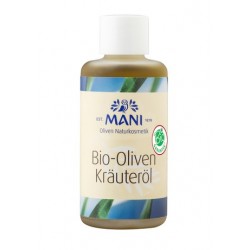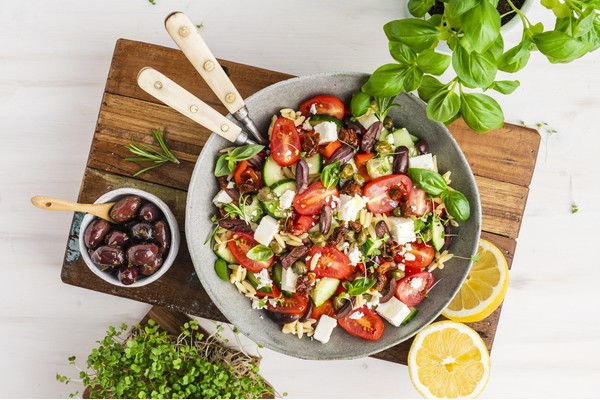If one considers olive trees as a natural theater production, then their green stone fruits are certainly the main actors. However, olive leaves in their "supporting roles" are also noteworthy. The evergreen olive leaves serve as the plant's lungs, collecting the energy of the Mediterranean sun and giving it its characteristic green appearance. Together with nutrients from the soil, Olea europaea receives the necessary life energy to produce its tasty and nutrient-rich fruits. But what power lies in the olive leaves themselves?
Uses of Olive Leaves
Like olives, olive leaves have a variety of health benefits, although they are slightly less well-known as natural and medicinal products.
History: From the Past to the Present
A look at history reveals that the special power contained in the small, leathery leaves of the olive tree has been known to humanity for many thousands of years.
Olive leaves are believed to have been used by the ancient Egyptians, and it is said that the ancient healers of the Mediterranean region also used the effects of olive leaves to treat ailments. In the Middle Ages, the famous medical nun Hildegard von Bingen is said to have treated gastrointestinal problems and high blood pressure with olive leaf tea.
Furthermore, medical-pharmaceutical records from the 19th century also contain interesting information about the use of olive leaf extract to treat fevers. Even then, a bitter ingredient was suspected to be the healing substance. Today, this substance has a pleasing name: oleuropein! And after this success story, it is not surprising that current science is showing great interest in this promising research subject, especially medicine and food research. An important question is: How can the valuable ingredients of these smooth-edged, gray-green olive leaves be best utilized?

The tradition of using olive leaves for medicinal purposes goes back a long way.
Olive Leaf Tea or Olive Leaf Extract?
The production of olive leaf tea is a traditional and relatively simple method of making the power of olive leaves available for internal use.
For optimal durability, the still-attached olive leaves on the branch are first dried and then chopped. This makes it easier to dose them for tea infusion.
Extracting olive leaf extract is another way to obtain the active ingredients of olive leaves for medicinal purposes. The olive leaves are pressed shortly after harvest, and the ingredients are extracted using water and alcohol, with 7 kilograms of olive leaves producing about 1 liter of olive leaf extract. This contains the substances of olive leaves in highly concentrated form and is used in the form of drops or capsules.
Ingredients and Properties of Olive Leaves
Olive leaves have a wide range of ingredients, some of which are also found in olives themselves and the olive oil produced from them. While olive leaves contain fewer fatty acids, the spectrum of secondary plant substances is similarly rich.
The most important biologically active ingredients include:
- Polyphenols: The most important representative of the polyphenols contained is the bitter substance oleuropein. As one of the main ingredients in olive leaves, this antioxidant substance is present in significantly higher amounts than in the stone fruits themselves.
- Chlorophyll: Also known as "leaf green," a natural plant colorant
- Flavonoids and chalcones: e.g., Olivin, quercetin, and rutin
- Triterpenes: e.g., oleanolic acid, maslinic acid
- Phenolic compounds: e.g., hydroxytyrosol, caffeic acid, and coumaric acid
Effect of Olive Leaves
Protecting itself and others seems to be the life motto of the olive tree, its leaves, and fruits: for example, certain flavonoids shield the tree from diseases or too intense UV radiation. But what is the effect of olive leaves on the human body?
The experiences gathered over centuries by healers from all over the world are increasingly supported by scientific studies. Thanks to this knowledge, a wide range of medical and cosmetic applications based on olive leaf extract and olive leaf tea are now known.
Internal use
Olive leaves can be used internally as follows:
- Digestive problems: Thanks to its antibacterial, antifungal, and anti-inflammatory properties, olive leaf tea is used for gastrointestinal tract disorders. The efficacy is attributed, among other things, to oleuropein, hydroxytyrosol, and triterpenes.
- Colds, flu, and fever: Respiratory infections and fever diseases are partly caused by viral and/or bacterial pathogens. Preparations from olive leaves have been administered for centuries to alleviate symptoms. At the same time, the application is said to strengthen the immune system.
- Protection against cardiovascular diseases: According to current studies, polyphenols from olive leaves have a blood-pressure-lowering effect. They also have a positive effect on blood lipids. Additionally, the antioxidant properties of flavonoids and oleuropein protect red blood cells from oxidative stress.
- Sleep disorders: Olive leaf tea is said to have a relaxing effect. Drinking a cup in the evening is said to help with falling asleep and prevent sleep disorders.
- Detoxification: Olive leaf tea is also a popular choice for detoxification and cleansing diets.
External use
In addition to internal administration, products made from olive leaf extract are ideal for external use, such as in natural cosmetics and anti-aging products. When processed into creams and lotions, the extract is said to improve the appearance of the skin, as well as increase elasticity and suppleness - the basis for healthy and resilient skin.

Olive leaves and olives are a powerful combination package.
The combination of olive leaf extract with healthy organic olive oil combines nearly all the benefits that the olive tree has to offer. An organic olive herbal oil, for example, is suitable as a calming care for dry skin, such as after a bath or as massage oil. For sensitive skin, it is also recommended to regularly pamper it with organic olive cream and thus provide sustainable care.
Preparation of Olive Leaf Tea
Dried or fresh olive leaves - preferably directly from the tree - are the basis of a tasty and beneficial olive leaf tea. For one cup, about 1 to 2 teaspoons of olive leaves are needed, which are brewed with about 200 milliliters of boiling hot water.
Depending on the desired taste, the steeping time is about 6 to 12 minutes. The olive leaves can also be chopped a bit beforehand. This way, they release their effect more quickly and, therefore, need to steep for a shorter time.
In terms of taste, olive leaf tea is similar to green tea, as both tea types develop a bitter-herb note, especially after longer steeping times. Here, the health-strong oleuropein makes itself "bittersweet" noticeable. If the bitter aroma is too strong, a teaspoon of honey can provide some "real" sweetness. Alternatively, olive leaf tea can be refined with mint leaves, ginger, or a slice of lemon.
Tip: A cup of Greek mountain tea made from hand-picked herbs also provides enjoyable and relaxing moments.



















